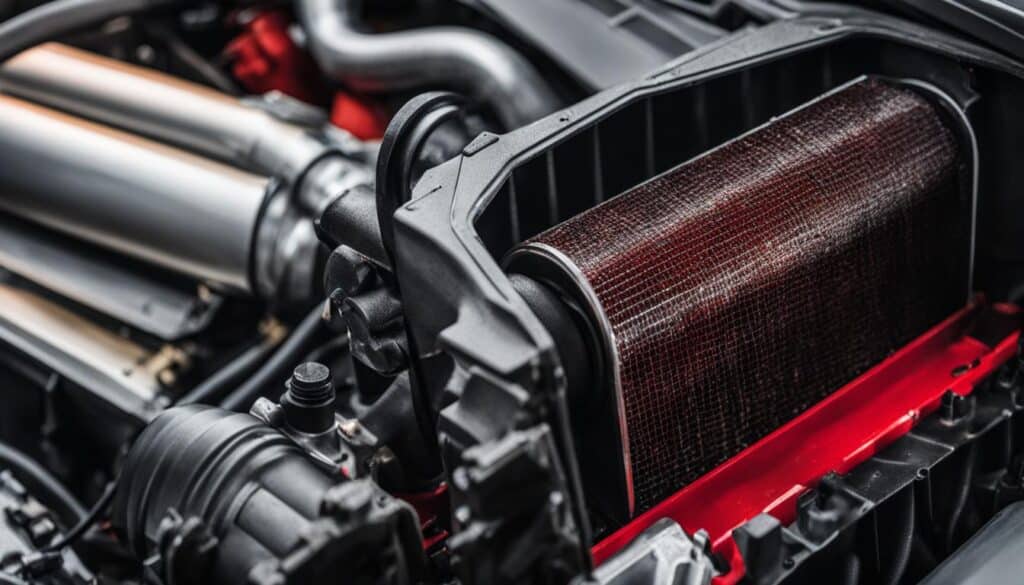The mass air flow sensor (MAF) is a crucial component of a car’s electronic fuel injection system. It measures the air mass flowing into the engine intake and helps regulate the air-fuel mixture. However, over time, the MAF sensor can become prone to issues and failures.
There are several common problems associated with mass air flow sensors. One of the signs of a bad mass air flow sensor is a lit-up check engine light. This can indicate that the sensor is not functioning properly and needs attention. Other symptoms include jerking and hesitation while driving, rough running, lean idling, black exhaust smoke, difficulty starting the engine, and poor fuel economy.
If you are experiencing any of these signs, it is important to address the issue promptly. Ignoring a faulty mass air flow sensor can lead to further damage to your vehicle’s engine and potentially compromise your safety on the road.
To understand more about troubleshooting and resolving mass air flow sensor issues, continue reading:
Key Takeaways:
- A bad mass air flow sensor can cause various symptoms, including a lit-up check engine light, rough running, and poor fuel economy.
- If you experience these signs, it is crucial to have the MAF sensor checked and repaired by a professional mechanic.
- Troubleshooting mass air flow sensor issues may involve testing the sensor, cleaning it, or replacing it entirely.
- Professional automotive repair and services are recommended when dealing with mass air flow sensor problems.
- Replacing a mass air flow sensor is relatively easy and can prevent further damage to your vehicle’s engine.
Troubleshooting Mass Air Flow Sensor Issues
To troubleshoot issues with the mass air flow sensor, there are several steps you can take:
- Use an OBD2 scanner to check the live data from the sensor and compare it to the expected values at idle and when revving the engine.
- If the values remain stable, there might be a problem with the sensor or the scanning tool.
- Refer to your car’s repair manual to measure the sensor and its wiring for any faults.
- If the wiring is faulty, it should be repaired.
- In some cases, a malfunctioning mass air flow sensor can be fixed by cleaning it with an electronic cleaner or a special cleaner made for the sensor.
- If the sensor is damaged beyond repair, it may need to be replaced.
Consulting with a professional automotive repair service is recommended for proper troubleshooting and repairs.
Solutions for Mass Air Flow Sensor Issues
When facing problems with the mass air flow sensor, it is crucial to seek the assistance of a professional automotive repair and services company. These experts possess the knowledge and experience to accurately diagnose the issue and provide the appropriate solutions.
If the symptoms indicate that the mass air flow sensor is not working correctly, it may need to be replaced depending on the severity of the problem. The cost of replacement can vary depending on the make and model of the car. It is important to note that the sensor alone can be quite expensive.
However, the good news is that replacing a mass air flow sensor is a relatively straightforward process that can usually be done within a short amount of time. To ensure a proper replacement, it is highly recommended to hire the services of an experienced auto repair service.
Driving with a malfunctioning mass air flow sensor is not advisable, as it can lead to further damage to the engine. It is best to have the issue addressed as soon as possible to avoid any potential safety hazards on the road.
FAQ
What are some common problems with the mass air flow sensor?
Some common problems with the mass air flow sensor include a lit-up check engine light, jerking and hesitation while driving, rough running, lean idling, black exhaust smoke, difficulty starting the engine, and poor fuel economy.
How can I troubleshoot issues with the mass air flow sensor?
You can troubleshoot issues with the mass air flow sensor by using an OBD2 scanner to check the live data from the sensor and comparing it to the expected values. You can also inspect the sensor and its wiring for any faults or clean the sensor using an appropriate cleaner. If necessary, consult with a professional mechanic for proper troubleshooting and repairs.
When should I consider replacing the mass air flow sensor?
If the mass air flow sensor is damaged beyond repair or cleaning, it may need to be replaced. Signs that indicate the sensor may need replacement include ongoing issues with engine performance, continued lit-up check engine light, and poor fuel economy. It is best to consult with a professional automotive repair service to determine if replacement is necessary.




